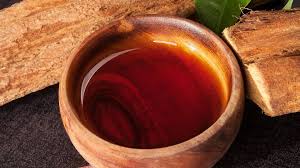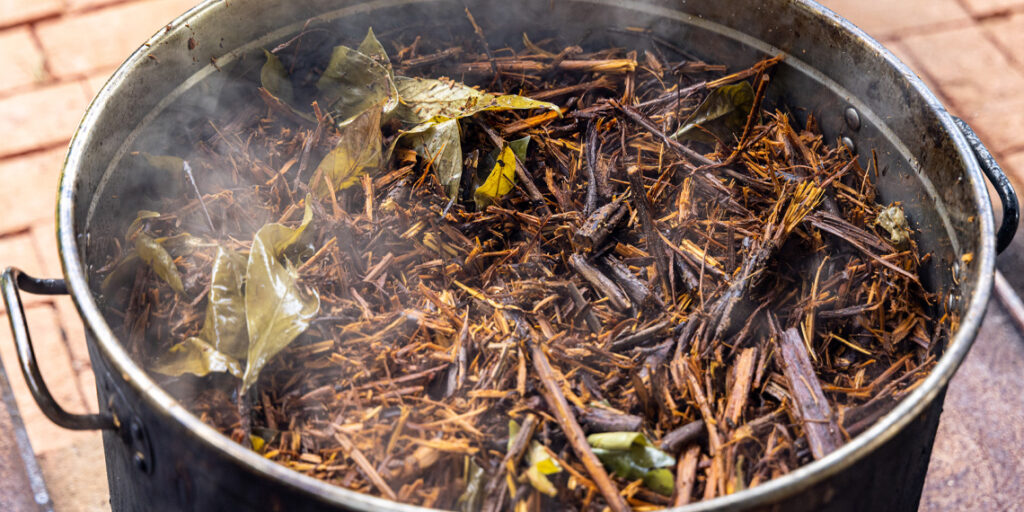Uncategorized
Understanding Ayahuasca: Duration and the “Iowaska Trip”
Introduction
Ayahuasca, a powerful and enigmatic brew originating from the Amazon rainforest, has captivated the attention of spiritual seekers, researchers, and those curious about altered states of consciousness. Known for its intense and transformative experiences, Ayahuasca has become a significant topic of discussion in both traditional and modern contexts. This blog post explores the duration of Ayahuasca’s effects and delves into what people often refer to as the “Iowaska trip”—a term sometimes used interchangeably with Ayahuasca experiences, despite being a common misspelling. We will provide a comprehensive guide to understanding the nature of Ayahuasca, its effects, and how long its impact typically lasts.

What is Ayahuasca?
Before diving into the specifics of how long Ayahuasca lasts and the nature of the “Iowaska trip,” it’s essential to understand what Ayahuasca is and how it functions.
- Ayahuasca’s Composition: Ayahuasca is a traditional psychoactive brew made primarily from two plants: the Banisteriopsis caapi vine and the Psychotria viridis shrub. The Banisteriopsis caapi vine contains monoamine oxidase inhibitors (MAOIs), while Psychotria viridis contains dimethyltryptamine (DMT). The combination of these plants allows DMT to become orally active, leading to the profound psychedelic effects associated with Ayahuasca.
- Traditional Use: Indigenous tribes in the Amazon basin have used Ayahuasca for centuries in ceremonial and healing contexts. The brew is believed to facilitate communication with spiritual realms, promote healing, and offer insights into personal and collective consciousness.
- Modern Popularity: In recent years, Ayahuasca has gained global attention, leading to its use in various retreat centers and therapeutic settings around the world. Its popularity is driven by reports of transformative experiences and potential therapeutic benefits.
How Long Does Ayahuasca Last?
The duration of Ayahuasca’s effects can vary based on several factors, including individual physiology, dosage, and the specific preparation of the brew. Generally, the Ayahuasca experience can be divided into different phases, each with its distinct characteristics.
- Onset: The effects of Ayahuasca typically begin within 30 to 60 minutes after ingestion. Participants may start to notice subtle changes in perception, including heightened sensory experiences and shifts in consciousness. This initial phase often involves a period of introspection and mental preparation for the more intense aspects of the experience.
- Peak: The peak effects of Ayahuasca usually occur 2 to 4 hours after ingestion. During this time, participants may experience vivid visual and auditory hallucinations, profound emotional and psychological insights, and a sense of connection to spiritual or cosmic realms. The intensity of the experience can be overwhelming, with participants often reporting a sense of merging with the universe or encountering spiritual entities.
- Afterglow: Following the peak, the effects gradually begin to subside over the next 2 to 4 hours. This afterglow phase is characterized by a sense of clarity, emotional release, and integration of the insights gained during the ceremony. Participants may feel a lingering sense of peace and reflection, which can extend for several hours to days after the ceremony.
Overall, the entire Ayahuasca experience can last between 4 to 8 hours, depending on the individual and the specific brew used. The duration of the psychological and emotional effects can vary, with some individuals reporting lasting impacts on their perspectives and emotional well-being.
The “Iowaska Trip”: Clarifying the Misconception
The term “Iowaska trip” is a common misspelling of “Ayahuasca trip.” Despite the spelling error, it often refers to the same psychedelic experience associated with Ayahuasca. To clarify, here’s an overview of what one might expect during an Ayahuasca experience and how the term “trip” relates to it:
- Psychedelic Experience: The Ayahuasca trip involves a profound alteration of consciousness, characterized by vivid visual and auditory hallucinations, emotional intensities, and deep introspective insights. Participants often describe the experience as a journey into the depths of their psyche, encountering symbols, visions, and sensations that offer new perspectives on their lives and the universe.
- Visual and Sensory Effects: During the Ayahuasca trip, participants may experience intricate patterns, vivid colors, and shifting landscapes. These visual effects can be accompanied by heightened sensory perceptions, such as intensified sounds and tactile sensations.
- Emotional and Psychological Insights: The emotional intensity of the Ayahuasca trip can lead to profound insights and revelations. Participants may confront past traumas, gain clarity on personal issues, and experience a sense of emotional catharsis. The trip often involves a deep exploration of one’s inner world and can lead to lasting changes in outlook and behavior.
- Spiritual and Mystical Experiences: Many individuals report spiritual or mystical experiences during their Ayahuasca trip. These can include encounters with spiritual beings, feelings of unity with the universe, and a sense of connection to a higher power or consciousness.
Factors Influencing the Duration and Intensity of the Ayahuasca Experience

Several factors can influence how long Ayahuasca’s effects last and the intensity of the experience:
- Dosage: The amount of Ayahuasca consumed can significantly impact the duration and intensity of the trip. Higher doses may lead to more intense experiences, while lower doses might result in a milder effect. It’s essential to follow guidance from experienced facilitators to determine the appropriate dosage for your needs.
- Preparation and Quality: The preparation and quality of the Ayahuasca brew can also affect the duration of the experience. Variations in the concentration of active compounds, the specific plants used, and the brewing process can all influence the potency and effects of the brew.
- Individual Physiology: Each person’s physiology can affect how they metabolize and respond to Ayahuasca. Factors such as body weight, metabolism, and overall health can impact the duration and intensity of the effects.
- Set and Setting: The context in which Ayahuasca is consumed, including the environment and mindset of the participant, can play a significant role in shaping the experience. A supportive and safe setting can enhance the positive aspects of the trip, while a challenging environment can contribute to difficult experiences.
- Psychological and Emotional State: Participants’ psychological and emotional states prior to the ceremony can influence their experience. Those with unresolved trauma or significant stress may have more intense or challenging experiences, while individuals in a positive and open state of mind may have more harmonious and insightful trips.
The Therapeutic and Transformative Potential of Ayahuasca
Ayahuasca has gained recognition for its potential therapeutic and transformative benefits. Many people seek out Ayahuasca experiences to address various psychological and spiritual needs.
- Healing Psychological Conditions: Research and anecdotal evidence suggest that Ayahuasca may help alleviate symptoms of depression, anxiety, PTSD, and addiction. The brew’s ability to induce profound introspection and emotional release can facilitate healing and personal growth.
- Spiritual Growth: Ayahuasca is often used as a tool for spiritual exploration and growth. Participants may gain new insights into their spiritual beliefs, experience a sense of connection to a higher power, and explore the nature of existence and consciousness.
- Personal Insight and Self-Discovery: The Ayahuasca trip can provide valuable insights into one’s life, relationships, and personal challenges. Participants often report a greater sense of clarity and understanding, leading to positive changes in their behavior and outlook.
- Emotional Release: The emotional intensity of the Ayahuasca experience can facilitate the release of repressed emotions and traumas. This cathartic process can lead to a sense of emotional relief and healing.

Risks and Considerations
While Ayahuasca offers potential benefits, it’s essential to approach it with caution and awareness of potential risks.
- Psychological Risks: The intense nature of the Ayahuasca trip can be challenging and overwhelming for some individuals. Those with a history of mental health issues, especially psychosis or schizophrenia, should avoid Ayahuasca, as it can exacerbate these conditions.
- Medical Risks: Ayahuasca can interact with certain medications and medical conditions. Individuals taking antidepressants, antipsychotics, or other psychoactive substances should consult with a healthcare professional before participating in an Ayahuasca ceremony.
- Physical Purging: The purging process, which includes nausea, vomiting, and diarrhea, is a common aspect of the Ayahuasca experience. While it is considered a part of the cleansing process, it can be physically taxing and uncomfortable.
- Legal Considerations: The legality of Ayahuasca varies by country and region. Participants should be aware of the legal status of Ayahuasca in their area to avoid legal issues.
- Choosing a Reputable Retreat: With the rise of Ayahuasca tourism, it’s important to select a reputable and ethical retreat center. Research facilitators, safety protocols, and the legal status of the retreat to ensure a positive and safe experience.
Conclusion
Ayahuasca is a powerful and transformative brew with a rich cultural heritage and profound effects. Understanding how long Ayahuasca lasts and the nature of the “Iowaska trip” can help individuals make informed decisions about participating in Ayahuasca ceremonies. By recognizing the factors that influence the duration and intensity of the experience, as well as the potential benefits and risks, individuals can approach Ayahuasca with greater awareness and preparation.
Whether seeking healing, spiritual growth, or personal
